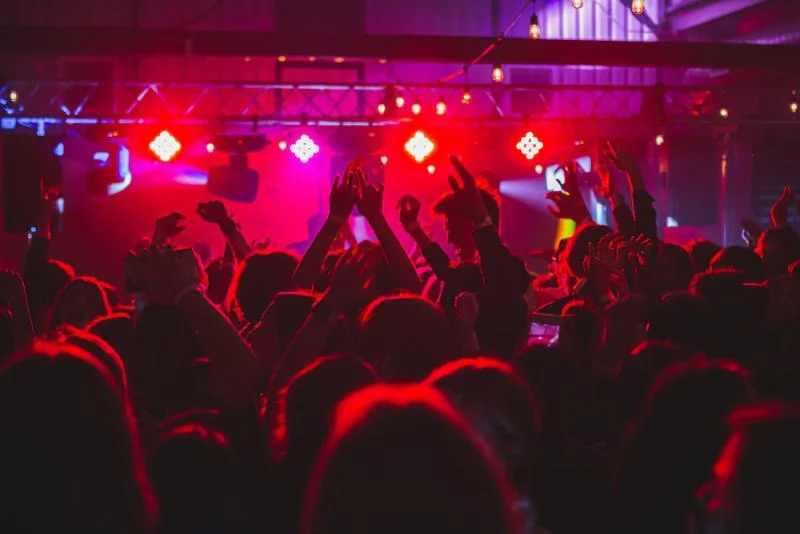A club and a bar are places where people go to relax, have fun, and get a drink, but they are very different in what they offer, how they look, and who goes there. The main difference between the two is what they are primarily about. Bars are mainly places where people can drink alcoholic drinks in a more relaxed setting where they can also meet new people. They usually have a long list of drinks, like beers, wines, spirits, and cocktails, but only a few snacks and appetisers. On the other hand, clubs are all about providing lively entertainment, such as pulsating music, DJ performances, and dancing. Clubs often have a dance floor, sound systems with the latest technology, and special lighting effects to make the party feel better.
The people who go there is another difference that stands out. Most bars have a more diverse crowd, from people going out after work to groups of friends looking for a chill place to hang out. On the other hand, clubs tend to attract younger, more active people who want a high-energy night out. Both places have different rules about what to wear and how to get in. Most bars have a more relaxed dress code than clubs, which often have stricter dress codes and may charge an entrance fee. Clubs may also have exclusive VIP areas, guest lists, or bottle service for people with more money to spend. In short, a club and a bar are different in what they do best (alcohol and socialising vs music and dancing), how they look, who goes there, and how they let people in.
What is a Club?
A club is a venue for social entertainment that focuses predominantly on providing a lively environment for patrons to enjoy music, dancing, and socialising. It is typically characterised by pulsating music, DJ or live performances, and a designated dance floor. Modern sound systems, special lighting effects, and, in some cases, visual displays or pyrotechnics further enhance the environment. Depending on the establishment’s theme or intended audience, the music played in clubs can range from ubiquitous chart-toppers to niche genres. Certain clubs may present themed nights or special events that attract fans of particular music genres, subcultures, or fashion styles. In general, clubs pander to a younger, more energetic demographic in search of an exciting night out.
While clubs do serve alcoholic beverages, their selection may be more limited than that of bars. Nevertheless, clubs frequently offer unique cocktails and drink specials that complement their overall theme or ambience. Exclusive VIP areas, visitor lists, and bottle service may also be available in clubs that cater to affluent customers. Admission policies and dress codes differ between clubs. Typically, clubs have a more stringent dress code than bars, requiring patrons to adhere to a certain level of decorum. In addition, clubs may need visitors to pay an entrance fee or be on a guest list in order to gain entry. In summation, a club is a social entertainment venue that offers a lively atmosphere for music, dancing, and socialising, with an energetic atmosphere, diverse music selection, and unique drink offerings that appeal to a predominantly younger audience.
What is a Bar?
A bar is a social establishment that predominantly serves alcoholic beverages and provides patrons a relaxed environment to unwind, socialise, and enjoy refreshments. A bar’s comprehensive drinks menu includes beers, wines, spirits, and cocktails, and its primary purpose is the consumption of alcoholic beverages. In addition to alcoholic drinks, bars offer a limited selection of non-alcoholic beverages, munchies, and appetisers. The atmosphere of a bar is typically more casual and relaxed than that of a club. Bars are typically equipped with comfortable seating arrangements, low-volume background music, and, in some cases, low-key amusement options such as pool tables, dartboards, or televisions broadcasting sporting events in order to encourage patron interaction and conversation.
Diverse clientele frequent bars, spanning from after-work drinkers to groups of friends seeking a casual environment for socialising. The atmosphere can vary greatly depending on the type of bar, with sports bars, dive bars, gastropubs, and cocktail lounges each offering distinctive experiences catered to specific preferences and interests. In general, bar dress codes and entry policies are more relaxed than those of clubs. Most bars do not charge an entrance fee and have a casual dress code, allowing patrons to wear comfortable apparel. In conclusion, a bar is a social establishment that focuses on serving alcoholic beverages in a laid-back environment, catering to a diverse clientele desiring a relaxed atmosphere for conversation, connection, and leisurely enjoyment.
Difference Between Club and Bar
A club’s primary emphasis and atmosphere differ from a bar’s. Bars are popular gathering places because of their casual ambience, wide selection of alcoholic beverages, and friendly staff. Yet clubs are all about the high-energy party environment, with music, dancing, and DJ performances. Although both bars and clubs serve alcoholic beverages and provide opportunities for social interaction, bars place a greater emphasis on relaxed discussion and rapport building, while clubs place a greater focus on high-energy, immersive entertainment. Read on for a summary of what sets clubs apart from bars.
Primary Focus
While bars are more relaxed gathering places to enjoy alcoholic beverages, clubs aim to provide a positive, interactive entertainment experience through live music and dancing.
Ambience
Clubs are places where people go to party, as they often contain loud music, DJ sets, and specialised dancing areas. Yet, bars provide a more casual atmosphere, perfect for striking up conversations and making new friends.
Entertainment
While bars may offer low-key entertainment like pool tables and dartboards, clubs typically feature live DJ sets, themed evenings, and special events.
Clientele
While clubs tend to attract a younger, more enthusiastic crowd looking for a high-energy night out, bars draw a wider spectrum of clients, from those looking for a relaxing drink after work to larger social gatherings.
Music
Bars often offer low-volume background music to encourage discussion, while clubs play a wider variety of music, often themed or geared towards the patrons.
Dress Code and Admission
Clubs are notorious for their tougher dress restrictions, cover charges, and guest lists. There is typically no dress requirement or cover charge at a bar.
Exclusive Offerings
VIP sections, guest lists, and bottle service are common ways clubs provide for their wealthier audience. In general, bars don’t offer such specialised services, opting to cater to as many customers as possible with affordable drinks and a friendly ambience.






